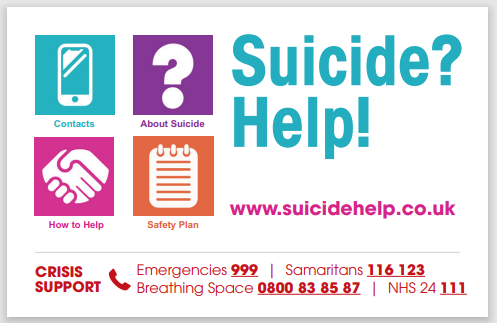Undertaking a needs assessment to inform local action
Time Space Compassion practice story in Tayside
Introduction
This practice story below describes the process and learning undertaken in Tayside through their needs assessment work and collective strategic insight and multiagency collaboration.
We needed to know what was really happening for children and young people in Tayside — and how we could respond better, together.
The challenge
There was limited clarity on:
The prevalence of suicide and self-harm among children and young people
What services were available locally
What evidence-based interventions were most effective

There was also data limitations (e.g. self-harm only recorded at Emergency Departments) and fragmented service provision across different Local Authority areas making strategic planning difficult. Inequality data (e.g. ethnicity) was under-recorded, though SIMD data offered some insight.
What they did
A comprehensive needs assessment exercise was undertaken, covering:
Epidemiology
Risk factors
Stakeholder views
Service mapping
Research evidence
Challenges included:
Inconsistent and incomplete data
Rapidly changing service landscapes
Lack of a single strategic governance group overseeing children and young people’s mental health services
Despite these barriers, the assessment helped build a clearer picture and fostered collaboration across sectors.
What they have learned
On reflecting on this work Tayside have highlighted the principles of Time, Space, Compassion outlined below as being key:
Starting well
There is widespread concern about children and young people’s mental health. Prevention is the most effective and cost-efficient approach, but services often focus on crisis due to limited capacity. Strategic planning must shift toward upstream investment. Building relationships with senior leaders across organisations is essential to advocate for change.
Making connections
S Service mapping revealed innovation and good practice across Tayside. The working group was noted to help connect partners who were previously unaware of each other’s work. Cross-authority networking was especially valued and is continuing as a way to share knowledge and improve services in the area.
Governance
Strategic leadership for children and young people is organised by each Local Authority, while services like the NHS and Police operate pan-Tayside. This mismatch created challenges but relationship-building helped overcome challenges. A key success has been the implementation of a pan-Tayside Information Sharing Agreement between CAMHS and the Named Person service to alert on crisis presentations.
The impact
Staff impact
There was:
Raised awareness of training and best practice
Built a multiagency community of stakeholders
Supported knowledge exchange in a developing and emotionally challenging area of practice
Staff reported Helped staff manage risk more effectively despite service pressures
Reflections from members of the Participation Network Tayside’s practice
What they liked:
Members welcomed the examples of good collaboration as this helps combine different knowledge and practice: “Staff can’t be experts in everything so this is inspiring”
What they found interesting:
Members hope that the case studies will help staff understand that reasons for suicidality are not the same for all young people and examples like these could help staff understand different types of contributing factors
